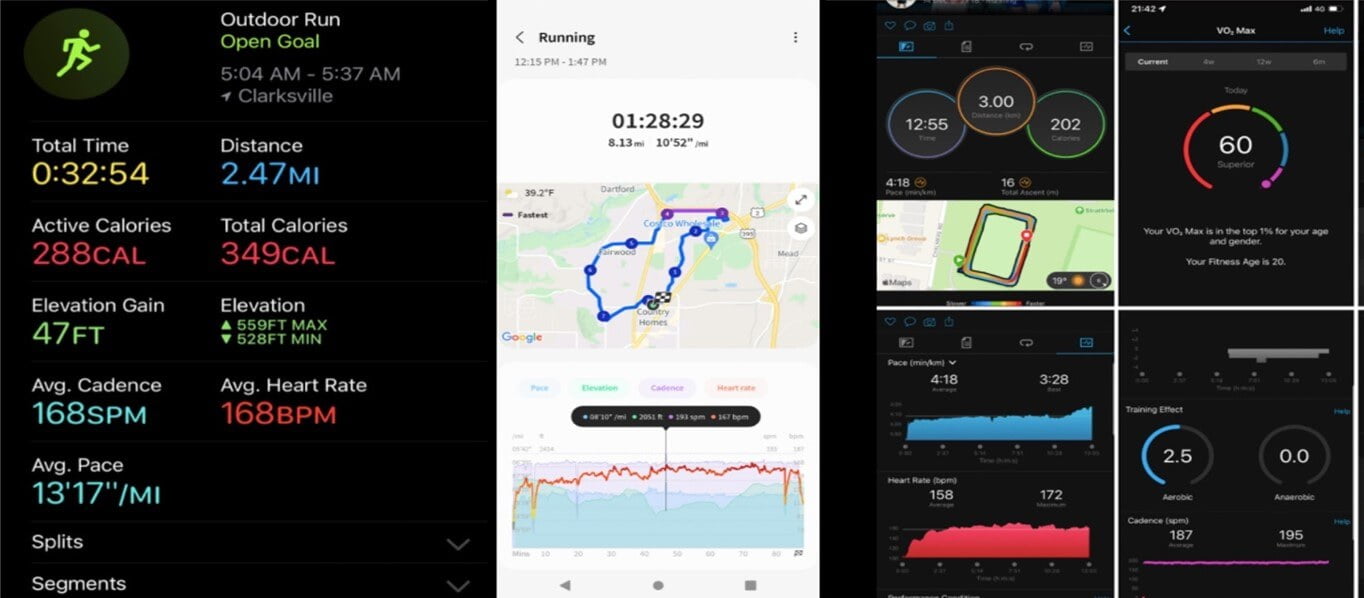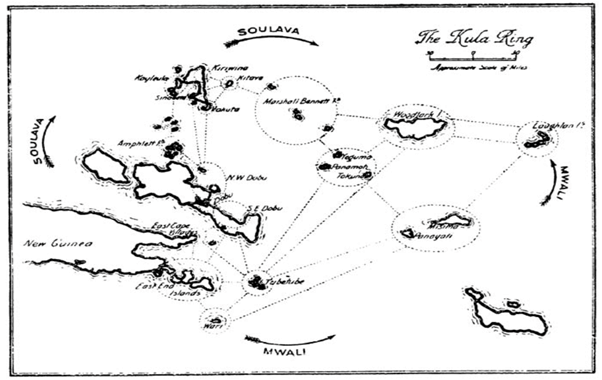Ada is 28 years old, and she is passionate about jogging. Because she spends much of her time at the office, she strives to go out for a run at least twice a week. She started three years ago by setting a goal of 1,8 miles per run for the first week. In time she has managed to improve her physical condition and now she is often covering more than 9 miles in one run. When various opportunities to participate in amateur competitions arose, she enrolled, and, one by one, she amassed a collection of diplomas and finisher medals which she proudly displays on a wall in her house. However, she doesn’t remember clearly how this new activity became such an important part of her life, although she always considered herself to be the kind of person who prefers outdoor walks rather than going to a pub. It may be that it all started with the online purchase of a new pair of sneakers.

From that moment, she began to find more information about running, sports equipment, and even announcements about running competitions organized in her city. What initially appeared as a necessity, later on, opened for her the door to new experiences and even new desires. The sports shoes she bought were later replaced with another pair, more suitable for running on asphalt while signing up for a mountain running competition triggered the need for buying yet another type of equipment. The headphones that she used for listening to music were replaced by wireless ones because the cord of the old ones would dangle and get in the way while running, then another device was needed to fix the mobile phone on the arm, and so on. Even the gifts she received began to reflect her new pastime. This is how she received a smartwatch as a gift, as someone thought she would find it useful for tracking her runs. She now uses it to monitor her performance, following parameters such as the number of calories burned, heart rate, route, distances, speed, etc.
Lately, she is increasingly using a paid AI-driven application that can create a custom algorithm-generated training program depending on the goals the user chooses: to stay fit, to gain endurance, and so on. But the app does another interesting thing. By combining the analysis of her previous running records with health-related data and her work schedule during the week, it can calculate what type of workout is best suited to her body. Adding to that is the introduction of new smart clothing or multi-sensor wearable technology for advanced performance analytics, and we have another picture of what it means to go out for a run. To put it simply, this is how datafication looks like.

Collage. Different kind of data was collected during running time. Source: Facebook.
Data affluence in “digital archipelagos”
According to a World Bank report, in 2018, digital services amounted to US$2,700 billion globally and their corresponding share in global services trade has reached 50 percent.
To illustrate the impact of data on everyday life, let’s take a short glimpse at some big… data. For example, in 1992, humanity transferred 100GB of data per day and by comparison, in 2020, global internet traffic was estimated to be more than 3 zettabytes, or 3,000,000,000,000 gigabytes (GB). To make more sense of this colossal number this means 32 GB for each person on the planet per month or 1 GB per person per day; 100,000 gigabytes per second; 325 million households watching Netflix simultaneously, at all times. And this is not all, it was estimated that in 2022, we will transfer 150,000 GB of data per second (World Bank 2021).
The production of data started in the 1980s with documents and transactional data and it was spurred by the proliferation of internet-connected desktop PCs in the 1990s. In the following decade, connected smartphones propelled a new data expansion, when emails, photos, music, and videos started to circulate daily and in the 2010s the production already included web data and metadata. Today, we face a new wave of data production that will expand beyond anything that we can imagine, this explosion being facilitated by additional monitoring data, analytical data, and meta-data collected by machines and various new technologies not only in industry, but also in the home, and while we spend our free-time (StateofAI 2019). But as data is generated more and more and comes from everywhere, it becomes more difficult to say how it is collected, who uses it, and to what purpose. Probably because of this elusive character, references to data are full of metaphors ranging from “new oil” to “new gold”, and form “a resource from which wealth can be extracted” to “data as currency” (Walford 2021, Deloitte Review 2013).
For example, formulas like “the data rush” (Tech Republic 2021) remind us of the Wild West, but between what was happening in California in the late nineteenth century and the gold rush for data in the actual digital archipelagos, I think there is only one similarity, that of the promises that both encapsulate. In the previous case we could say that we have the promise of abundance free-for-all, while in the former case, it seems like we have the promise of abundance free-from-all. Interestingly, although extractive metaphors run the show when it comes to data commentators, I haven’t noticed such manners of speaking in the discourse of any of the data professionals that I am familiar with. This made me think that the extractive metaphors are being used mostly by outside observers rather than inside the industry, and in certain aspects, this could be a trap. To pave the way for new understandings, I am more tempted to agree with Bill Maurer (2021) that we need to move away from the “extractive” model, accumulation – dispossession – control, which could lead us to circular explanations and theories that put in a new light the same old structures of domination. The main critique of this framework is that the result is already known capitalism reproduces itself everywhere, either in the digital or physical universe, in the same way, but definitely in an endless and unstoppable manner.
Extractive metaphors are indeed fuelled by the various references to “mining” that we encounter in the digital space, but in computing, “mining” has a different meaning than in the physical world. Mining for cryptocurrency, for example, means adding transactions to a chain, not extracting something from someone. In addition, “data mining” has nothing to do with extracting a resource, but with discovering patterns in large data sets, similar in a way to what anthropologists do when they analyze their data. For this reason, Kockelman (2020) draws a witty parallel with anthropology when he talks about the transformation of machines into Mal(ware)inowski type ethnographers, referring to one of the founding heroes of social anthropology, Bronislaw Malinowski. But for anthropologists collecting data through participant observation implied – at least in theory – not just the process of collecting data and extracting patterns, but also giving something back to the people they study, reciprocating, repaying the favor of being allowed to be part of everyday life of a community.
Along this line, we may ask ourselves: Is data a kind of gift?
Does the relationship between those who give digital data and those who collect this data resemble a gift exchange?
How can we uncover the networks and the socio-technical infrastructure that enables data to circulate in these transactions?
What are new forms of politics, laws, and economic relations that shape this “data gift”?
Finally, if we want to understand people, data, and data transactions, we should have to be aware that all of them are involved in creating and recreating each other, as Marlyn Strathern (1988) once put it. To try finding answers to so many important questions is a challenge for all of us. In what follows I’m barely scratching the surface.
IF data IS “GIFT”
THEN product_code STARTS_WITH “WORK”
The Latin origin of the word “data” implies that some(thing) is “given”. Such transactions signal an archaic form of social action and one of the main topics of anthropological research: the gift exchange. In this respect, it is enough to think of the ubiquitous invitation <Please check the box if you want to proceed> to understand that data are not just freely “given”, but in a way we are all compelled to give them.
For anthropologists, the obligatory circulation of gifts between the same givers and receivers is one of the most important features of such exchange. Bronislaw Malinowski (1984 [1922]) observed in the Melanesian tribal societies a ritualized form of exchange in which men from Trobriand Islands were involved. Sitting in a close circle, they exchanged gifts consisting of necklaces (soulava) clockwise, while in the opposite direction they exchanged armbands (mwali), creating a close network that connected various islands in the Melanesian archipelago, that Malinowski named the Kula ring. But this is not all, to enable the gifts to circulate continuously, such expeditions took place twice a year, and after one year and sometimes even after two years, the gift given returned to its original owner.

Photo: The Kula Ring print-screen from Argonauts of the Western Pacific by Bronislaw Malinowski, edition published in the Taylor & Francis e-Library, 2005.
Marcel Mauss (1925) in his famous work Essai sur le Don, a book that is generally held to be the founding work of economic anthropology, showed that in small-scale economies like, for example, in the Trobriand Islands, the surplus is produced, but the motives for exchange are different from those in our societies. Mauss coined as gift economy the exchange that was primarily motivated by the obligation to give, to receive, and to return the gift, under the sanction of breaking the social relation. Asking himself what force rests in the thing given which compels the receiver to return the gift, he finds the answer in the Maori concept of hau, the spirit of the gift. For those that did not comply, the consequence was disbandment, detachment, disconnection, isolation from the group. In this way, the gift reveals its primary role: to bind people together. In opposition, in a market economy the exchange of goods is not mandatory, but formally free, in sale and purchase transactions, objects are alienable private property defined primarily in terms of use-value and exchange-value, rather than by the relation or the identity of the transactors (Carrier 1991). And people are not interested in creating long-enduring relations, that’s why most often the relation ends after the exchange is consumed.
Intriguingly, how industry professionals talk about data has not received any attention, because if you listen well, you will find that they usually borrow words that we usually associate with food. Seems like, in the end, as George Lakoff and Mark Johnson famously put it “one can see beyond metaphors only by using other metaphors” (2003:445). For example, data professionals often say that “data is fed into the model” or that “data is consumed at high ingestion rates”. In the same register, it is said often that “data is consumed” or “processed by the system”. Sometimes, even speaking of how data is collected falls under the same register, and we are welcomed with “cookies” on every site of the internet. It is curious how a very technical domain like AI could have so many words in common with a cookbook. Such references to food are reminiscent of what anthropologist James Suzman (2020) following the footsteps of George Miller calls “informavores”. Suzman notes that psychologist George Armitage Miller, founder of the Center for Cognitive Studies at Harvard in the 1980s, was stuck looking for a word to describe the relationship between living organisms and information. To solve this dilemma, Miller stated that “just as the body survives by ingesting negative entropy [free energy], so the mind survives by ingesting information”, and to describe organisms that ingest information, he coined the term ‘informavores’ “(Suzman 2020:122). Although the term was originally used for living organisms with a high cognitive capacity, Suzman broadened this concept and included all nonhuman living beings from prokaryotes to plants. However, I don’t think it would be wrong to add non-living nonhumans like AI to this category, particularly as currently many expert systems already include data collection components and can “get their food without any external help”. Therefore, if the data is a kind of “gift” consisting of information that feeds an AI system, then maybe we can also look at data like a type of food sharing.
At this point, to narrow the subject we could ask, as James Carrier once did: “Does the cook give the meal or the labor of preparation?”. Following the footsteps of Marcel Mauss, Carrier (1991) notes that work can be a “gift”, as it can be a “commodity”, and that in fact, most of the time there is no clear distinction between giving an object (including food or data) and giving work. To make sense of this new kind of work we may need a new concept that takes into consideration the overlapping boundaries between labor-time and leisure-time in data production. Most of our data-generating activities are the result of actions that are not related to work per se, but with ways of spending our free time, with leisure, with being idle, with pause, but at the same time becomes productive and a new kind of work. The result of this “new mode of production”, or rather “mode of engendering”, to expand Bruno Latour’s (2020) expression takes the form of the “gift” we offer for maintaining and enriching our social relations not only with our fellow human beings but also with non-humans.
Returning to Ada, and her new passion for running we can easily see that many digital platforms or mobile apps that she uses offer – under the appearance of generosity – their services as a kind of gift, and in return, she is compelled to give her data, nothing less than a part of her inalienable identity. In a way, even the digital traces that she leaves when she is surfing the internet can be seen as a kind of “hau” (the spirit of the gift), something that reminds of her in the digital space, so that the platform, the app, the advertisers will offer something in return, at some point later. Data is in this way the “gift” that she generates and gives each time she gets out for a run, every time she is searching the online shops for new equipment for running, etc. As data circulates between various expert systems Ada receives in exchange new experiences, optimized preferences, and other digital gains. Translated by data scientists, the simple act of running opened new paths for new relationships, not only with other runners that she likes to compete with during free time, but also with her smart gadgets or mobile apps, and with an entire eco(nomical)system that is built on data, from apps designers to AI tools, from advertising companies to online shopping, and from digital workers to sport-related commodity supply chains. As humans are more and more plugged-in, connected, wired, linked in digital spaces, any time spent by a human, using digital tools becomes a way to produce and exchange data. From data-driven shopping to algorithm-generated training, it is difficult to say to what extent Ada’s choices are hers and how much of her new passion is built on and by data. In other words, the agency is distributed between the various kinds of actors that compose her network.
Humans not only shape tools, but they are also shaped by them, and in the same manner, humans not only shape algorithmic models, in exchange they are shaped by these algorithms. In the end, just as matter matters, models model and to build fair algorithms we need to dig deeper to understand the pixels that contain the big picture.
Final remarks. On data_as_gift and fairness
Data-as-gift takes not only an individual form as in Ada’s case but also a collective one. For example, governments through Open Government Data programs are among the largest data providers globally (Eggers et al. 2013). The desideratum of this “gift” is to reuse the data, including for commercial purposes. Even the Romanian Government launched, in 2018, the first open data sets, by comparison, a decade away from the UK Government, but it did. The category of open data includes records stored electronically or on paper, documents, databases, audio-video recordings, maps, tables, etc., in short, chaotic information, more or less structured, waiting for someone or something to use it and find its utility, to offer something in return. This movement is also a part of a larger circular movement which includes what is called “data philanthropy”, where corporations donate data to non-profit actors through development intermediaries, such as the UN (Kirkpatrick 2013).
But the gift-like transactions are not the only way around. As data markets expand, they raise more and more ethical concerns. For example, many observers ask if the methods by which the advertising industry, for example, accumulate data has not become more invasive, opaquer as it becomes more sophisticated. Marion Fourcade and Daniel Kluttz (2020) state that data transactions that resemble gift exchange define the “give-to-get” relationships. They see here a regime of “accumulation by gift” that masks a structural asymmetry between the giver and the receiver, and at the same time allows the creation of new commodities, through which personal data are privately appropriated and their value obscured. It is true that in some cases, data brokers intervene in the scheme, sometimes as third parties, and sell the data obtained on arcane markets, becoming a source of numerous and variegated “digital wrongs”. For this reason, there is an ongoing debate about the need for “digital rights” designed to protect users from profiling and insidious web-tracking technologies as well as from fake AI products (Kaltheuner 2021).
Isolated, data means nothing. When data becomes “food” for AI, it is valuable because it is part of a code + data association. Anthropologist Antonia Walford (2021) observed that “data is a form of potential and is valued not only for what it is but also for what it will become”. I may add that data also bring to light ways of value creation, and not only by what is taken or extracted but also by what is given in return, by what is assembled. Because data is truly valuable only in large quantities and in a collective arrangement, we may say that data is a system, not a single “thing”, and its value comes from the collective information that is created i.e., the patterns that exist between various datasets.
By looking back at the Maori or Melanesian gift exchanges, we could identify collective ways to monitor data transactions, by building networks of horizontal relations, and by endowing them with the power to sanction lack of transparency, invasiveness, nonreciprocity, and unfairness. In this light, maybe the collective could become not only a source of value but also a way to tackle at least some “digital wrongs”.
References:
Carrier, J.G. 1990. Gifts in a world of commodities: the ideology of the perfect gift in American society. Social Analysis 29, 19-37.
Frederike, K. 2021. Fake AI. Manchester: Meatspace ISBN 978-1-913824-03-7
Fourcade, M. and Kluttz, D. N. 2020 ‘A Maussian bargain: Accumulation by gift in the digital economy’, Big Data & Society. doi: 10.1177/2053951719897092.
Gregory, C.A. 2015. Gifts and commodities. Chicago: Hau Books.
Kirkpatrick. 2013. Data philanthropy: public and private sector data sharing for global resilience. UN Global Pulse blog.
Latour, B. 2020. Accumulation – Production or Engendering? Accessed at 05.12.2021. https://www.e-flux.com/architecture/accumulation/345107/production-or-engendering/
Lakoff, G. and Johnson, M. 1981. Metaphors We Live By. Chicago, IL: University of Chicago Press
Mauss, M. 2016 [1925]. The gift expanded edition (ed. and trans. J.I. Guyer). Chicago: Hau Books.
Malinowski, B. 2005 [1922]. Argonauts of the Western Pacific. Routledge: London.
Strathern, M. 1988. The gender of the gift: problems with women and problems with society in Melanesia. Berkeley: University of California Press.
Suzman, J. (2020), Work. A history about how we spend our time. London: Bloomsbury Circus
Walford, A. 2021, Data – ova – gene – data. J R Anthropol Inst, 27: 127-141. https://rai.onlinelibrary.wiley.com/doi/10.1111/1467-9655.13484
World Development Report (WDR) 2021, Data for Better Lives
State of AI 2019



